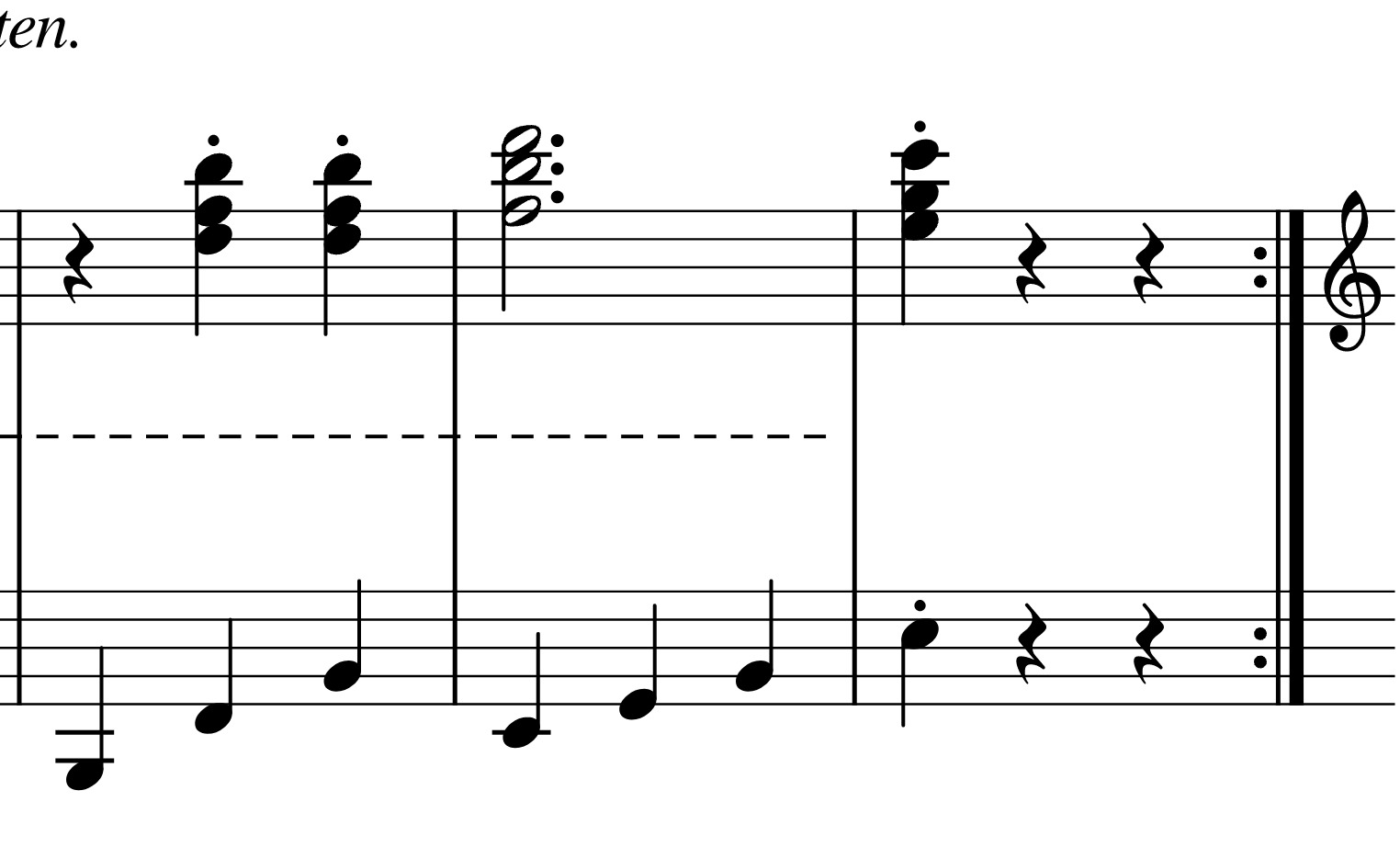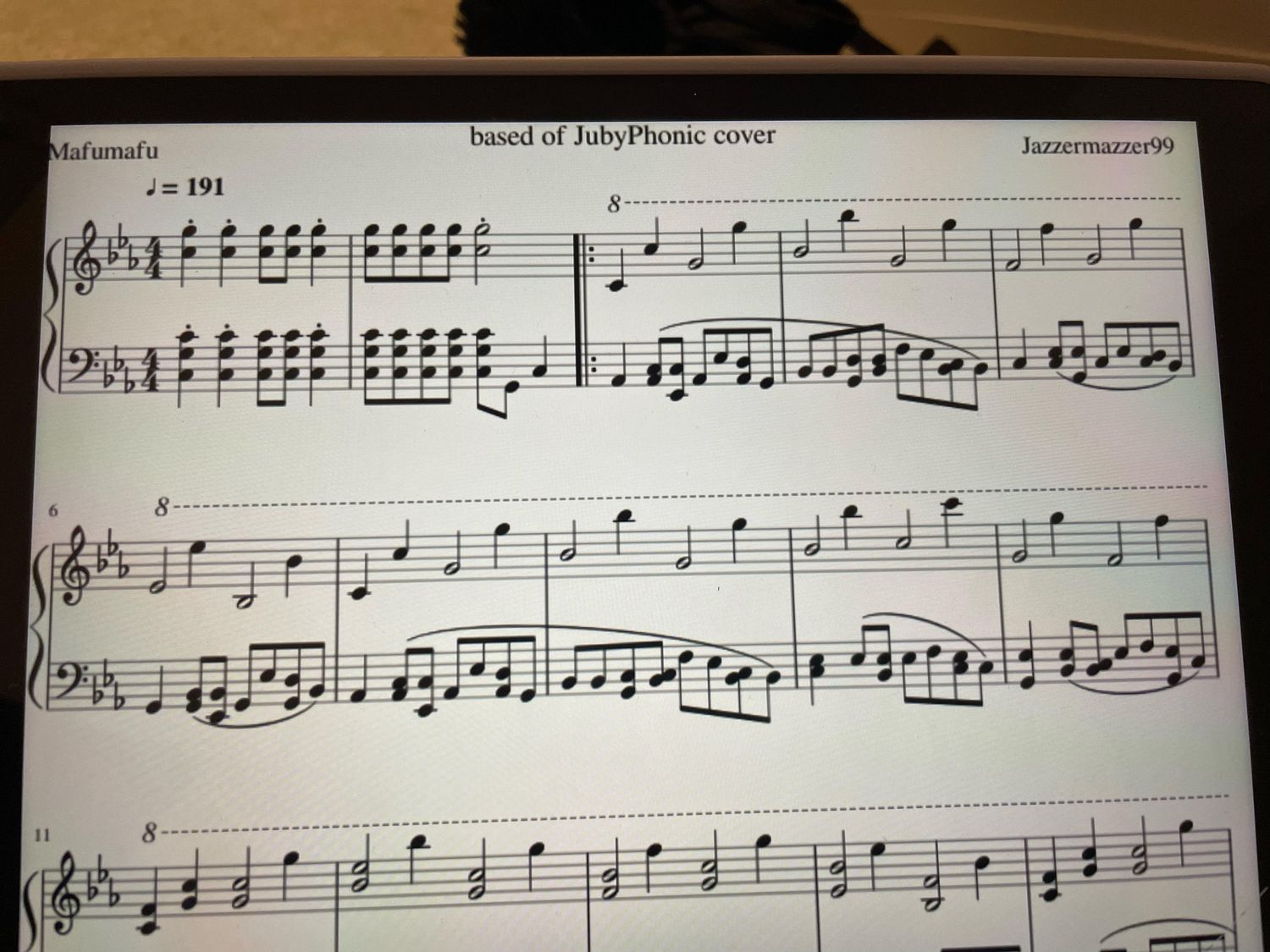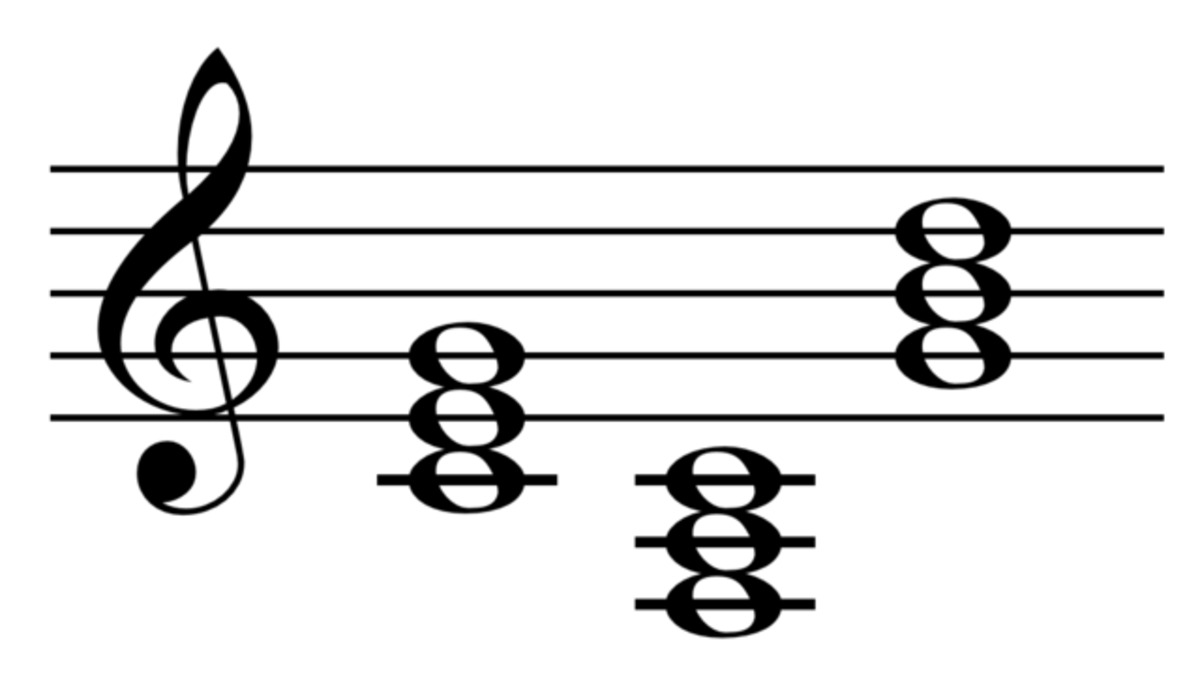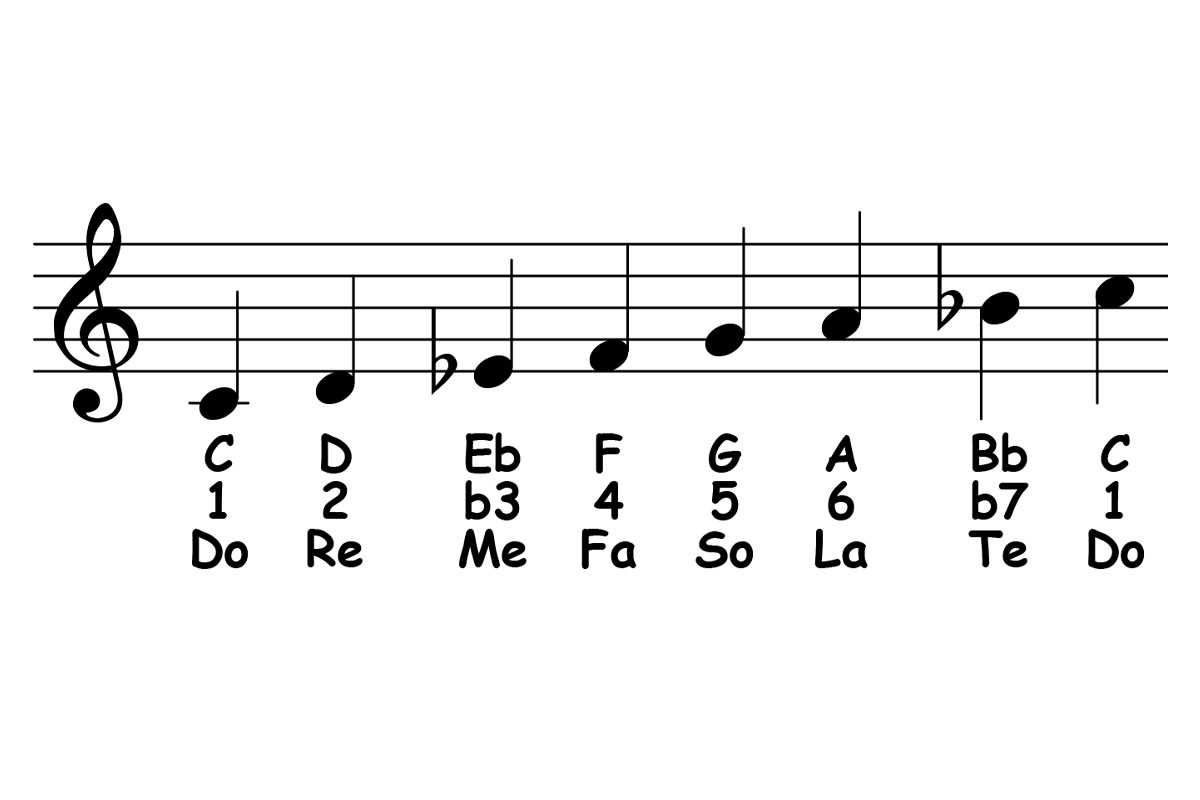Home>Production & Technology>Music Theory>What Is Retrograde In Music Theory
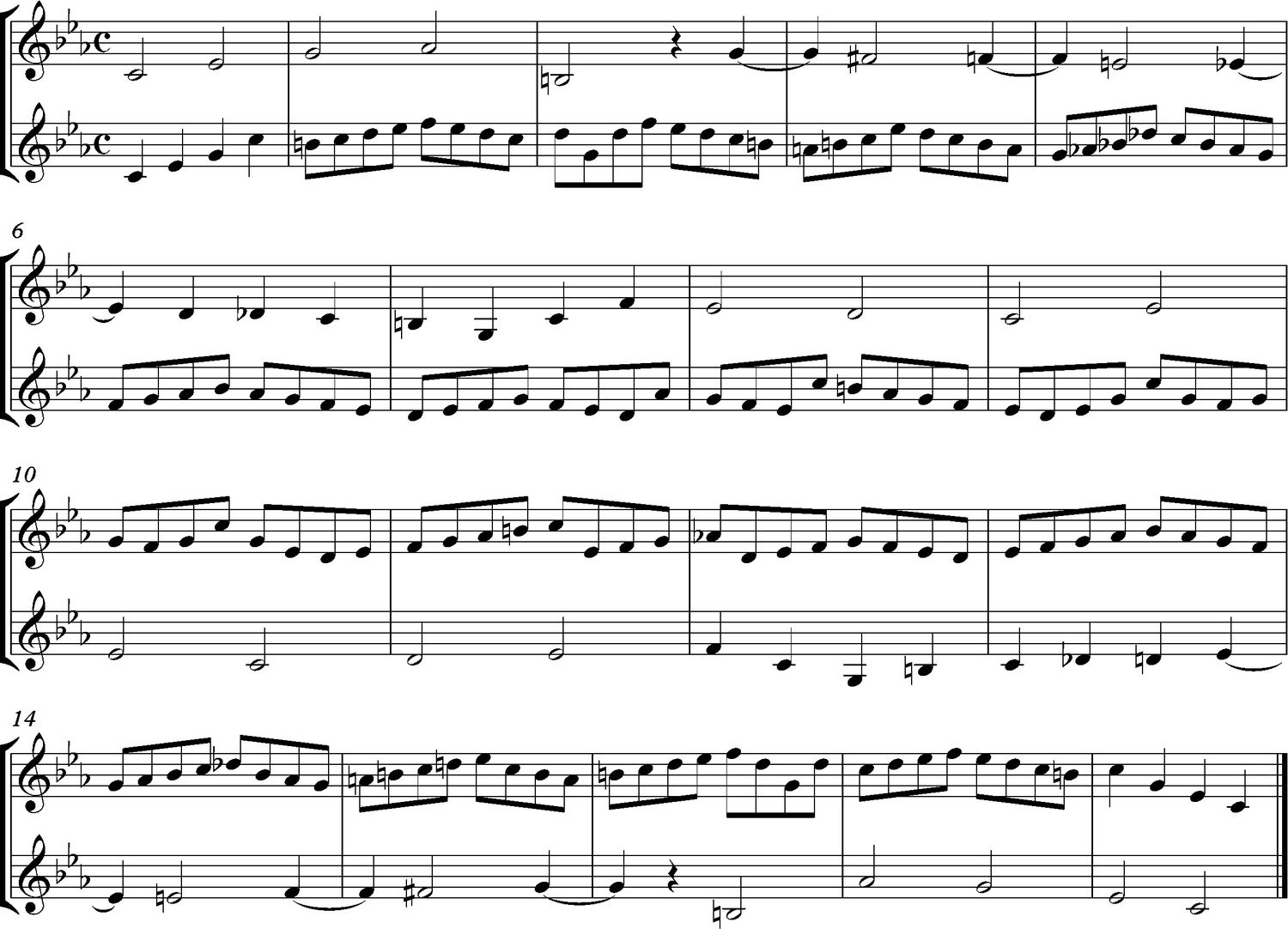

Music Theory
What Is Retrograde In Music Theory
Modified: February 15, 2024
Discover the concept of retrograde in music theory and how it relates to the broader study of music. Explore the intricate patterns and techniques used in retrograde compositions. Enhance your understanding of music theory today.
(Many of the links in this article redirect to a specific reviewed product. Your purchase of these products through affiliate links helps to generate commission for AudioLover.com, at no extra cost. Learn more)
Table of Contents
Introduction
Music theory is a vast and fascinating field that encompasses various concepts and techniques, essential to understanding and appreciating music at a deeper level. One such concept is retrograde, which holds a significant place in the world of music theory. Retrograde, derived from the Latin word “retrogradus,” meaning “backward,” refers to a technique where a musical passage or motif is played in reverse order.
Retrograde has a long and rich history, dating back centuries. This technique has been employed by composers across different musical genres and eras, making it a crucial aspect of music composition. By understanding retrograde, one can explore the depths of musical ideas, uncover hidden nuances, and gain a greater appreciation for the art form.
In this article, we will delve into the definition, historical significance, and various applications of retrograde in both classical and modern music. We will also analyze some notable examples and techniques associated with retrograde. Whether you are a music student, enthusiast, or simply curious about the intricacies of music theory, this article will provide you with valuable insights into the world of retrograde in music.
Definition of Retrograde
In music theory, retrograde refers to the technique of playing a musical passage or motif in reverse order. It involves reversing the original melody or musical phrase so that the last note becomes the first, the second-to-last note becomes the second, and so on. This reversal of the musical material creates a distinct and often intriguing effect.
Retrograde can be applied to various elements of music, including melodies, chords, rhythms, and even entire musical compositions. By reversing the order of the original material, composers can explore new possibilities, create interesting variations, and add a unique flavor to their works.
It is important to note that retrograde is different from playing a passage in retrograde inversion. While retrograde involves playing the notes in reverse order, retrograde inversion combines the reversal of the melody with the inversion of the intervals, resulting in a more complex transformation of the musical material.
The concept of retrograde has its roots in the ancient practice of palindrome, where a musical phrase or sequence reads the same backward as it does forward. Retrograde takes this concept a step further by reversing the order of the notes, creating a distinct musical effect that can evoke various emotions and capture the listener’s attention.
Retrograde is not limited to a specific musical genre or time period. It has been utilized by composers throughout history, from the Baroque era to contemporary music. By incorporating retrograde into their compositions, composers can add depth, complexity, and a sense of musical development.
Now that we have a clear understanding of what retrograde entails, let us explore its historical significance in the world of music theory.
Historical Significance
The concept of retrograde has a long and significant history in music theory. Its origins can be traced back to ancient civilizations, where it was used as a compositional technique in early forms of music. In medieval and Renaissance music, retrograde was often employed in the composition of canons and fugues, adding complexity and intellectual depth to these intricate musical forms.
Retrograde became particularly prominent during the Baroque era, with composers like Johann Sebastian Bach using it extensively in their compositions. Bach’s “Musical Offering” and “Art of Fugue” showcase intricate fugues where retrograde is employed to create musical puzzles and intricate structures. These compositions demonstrated the intellectual prowess of composers, as well as their ability to manipulate musical elements with compositional skill.
In the early 20th century, composers of the Second Viennese School, such as Arnold Schoenberg and Anton Webern, embraced retrograde as part of their exploration of atonal and serial music. This period witnessed a departure from traditional tonality, and retrograde provided a means for composers to create new musical structures and complexities. Retrograde became an integral part of the twelve-tone technique, where all twelve pitches of the chromatic scale are treated equally and ordered in a specific series.
Throughout the years, retrograde has continued to be utilized by a wide range of composers across different musical styles, including contemporary and experimental music. Its significance lies in its ability to add depth, structure, and variation to musical compositions, allowing composers to manipulate and transform musical material in intriguing ways.
The historical significance of retrograde is not solely tied to the technical aspects of composition. It also reflects the evolution of musical thinking and the desire to push the boundaries of musical expression. By employing retrograde, composers have been able to create unique musical experiences, challenge traditional norms, and expand the possibilities of the art form.
Now that we understand the historical significance of retrograde, let us explore how it has been utilized in classical and modern music.
Retrograde in Classical Music
Retrograde has played a prominent role in classical music, particularly in the Baroque and Romantic eras. Composers during these periods often utilized retrograde to add complexity and musical puzzles to their compositions.
One of the most notable examples of the use of retrograde in classical music is found in Johann Sebastian Bach’s “Musical Offering.” This collection of compositions, based on a theme presented to Bach by Frederick the Great, includes a “Ricercare” that showcases Bach’s mastery of counterpoint and retrograde technique. The musical material is presented in various forms, including retrograde, inversion, and retrograde inversion, demonstrating the composer’s ingenuity and skill.
Another prominent composer who employed retrograde was Ludwig van Beethoven. In his Piano Sonata No. 14, also known as the “Moonlight Sonata,” Beethoven uses retrograde in the development section. By playing the opening motif in reverse order, Beethoven adds a sense of drama and introspection to the composition, enhancing the emotional impact on the listener.
During the Romantic era, retrograde continued to be used as a compositional tool. Hector Berlioz, in his acclaimed symphony “Symphonie Fantastique,” incorporates retrograde in the last movement. The use of retrograde in this piece adds an element of transformation and development, highlighting the cyclical nature of the composition.
Aside from these famous examples, retrograde can be found in many other compositions from the classical period. It was often used to create intricate fugal and contrapuntal textures, providing composers with a means to explore different harmonic and melodic possibilities.
The use of retrograde in classical music not only showcases the technical expertise of the composers but also adds intellectual depth and excitement to the compositions. By manipulating the order of the musical material, composers were able to create a sense of puzzle-solving and musical development, engaging the audience and challenging their expectations.
Now that we have explored retrograde in classical music, let us shift our focus to its application in modern music.
Retrograde in Modern Music
Retrograde continues to be a significant technique in modern music, with composers across various genres and styles incorporating it into their compositions. In modern music, retrograde serves not only as a compositional tool but also as a means of creating new and unique sounds.
In the realm of contemporary classical music, composers like Igor Stravinsky and Pierre Boulez have experimented with retrograde to add complexity and innovation to their compositions. Stravinsky’s “Symphony of Psalms” features a section in which the musical material is presented in retrograde form, creating a sense of forward and backward motion. Boulez, in his composition “Le Marteau sans Maître,” employs retrograde as part of his exploration of serialism and atonal music, pushing the boundaries of traditional tonality.
In the world of jazz, retrograde has found its place in the improvisational nature of the genre. Jazz musicians often incorporate retrograde as a melodic and rhythmic tool during improvisation, creating surprising and unexpected musical moments. By reversing melodic lines or rhythmic patterns, jazz musicians can add a sense of tension, variation, and development to their performances.
Electronic and experimental music also make use of retrograde in unique ways. With the advent of digital technology, it has become easier than ever to manipulate and reverse audio signals. Artists in the electronic music genre often incorporate retrograde as a sound design technique, reversing samples, and synthesized sounds to create a distinct and otherworldly sonic experience.
Retrograde is not limited to specific genres or styles. It has also found its way into popular music. Artists from various genres, including rock, pop, and hip-hop, have employed retrograde to add an unexpected twist to their compositions. Whether it’s reversing a vocal line, a guitar riff, or a drum pattern, retrograde can add a unique flavor and catch the listener’s attention in the ever-evolving landscape of contemporary music.
The incorporation of retrograde in modern music demonstrates the continual evolution of musical techniques and the willingness of composers and musicians to explore new possibilities. It allows for the creation of innovative sounds, unexpected musical developments, and fresh approaches to composition and performance.
Now that we have explored retrograde in modern music, let us examine some techniques and examples of retrograde in more detail.
Techniques and Examples of Retrograde
There are various techniques and approaches to employing retrograde in music composition. Composers have used retrograde in a multitude of creative ways to enhance their compositions and create compelling musical experiences. Let’s explore some of the techniques and examples of retrograde:
- Complete Retrograde: This technique involves reversing the entire musical passage or melody, playing it from the last note to the first. An example of this can be found in Anton Webern’s “Symphony, Op. 21,” where he uses complete retrograde to create a sense of musical transformation and development.
- Partial Retrograde: In this technique, only a portion of the musical material is reversed, while the remaining segments stay in their original order. This selective use of retrograde adds a touch of variation and surprises to the composition. This technique can be heard in György Ligeti’s “Etudes for Piano,” where he employs partial retrograde to create rhythmic complexity within his compositions.
- Inverted Retrograde: This technique combines the concepts of retrograde and inversion. Not only is the musical material played in reverse order, but the intervals between the notes are also inverted, creating a distinct and complex transformation. This technique can be observed in Arnold Schoenberg’s “Variations for Orchestra,” where he showcases the use of inverted retrograde to create intricate melodic and harmonic patterns.
- Palindrome: Palindrome is a technique that combines retrograde with the concept of forward and backward symmetry. The musical material is structured in such a way that it reads the same backward as it does forward. One example of this technique is Maurice Ravel’s “Boléro,” where the main theme is presented in a palindromic structure, adding a sense of unity and balance to the composition.
These are just a few examples of the techniques and approaches to employing retrograde in music composition. The creative possibilities are virtually endless, and composers continue to push the boundaries by exploring new ways to incorporate retrograde into their works.
By utilizing these techniques, composers can enhance the musical narrative, add complexity and variation, and create a sense of transformation and development. Retrograde serves as a powerful tool for composers to captivate listeners and evoke different emotions through the manipulation of musical material.
Now that we have explored the techniques and examples of retrograde, let us delve into the musical analysis of retrograde to understand its impact on compositions.
Musical Analysis of Retrograde
When analyzing retrograde in music, it is essential to consider various aspects, including its impact on melody, harmony, rhythm, and overall structure. By examining these elements, we gain insights into how retrograde contributes to the composition’s overall musical character and narrative.
One primary function of retrograde is its ability to create musical contrast and variation. By reversing the order of the notes, composers introduce a new perspective on the melodic line. This alteration can evoke different emotions, create tension or resolution, and add a sense of surprise or unpredictability to the music.
Harmonically, retrograde can offer unique and unconventional progressions. The reversal of melodic intervals can lead to unexpected chord changes, altering the harmonic landscape of a composition. As a result, retrograde can add richness and complexity to the harmonic structure, giving composers the freedom to explore new tonal possibilities.
In terms of rhythm, retrograde can transform the rhythmic patterns and create rhythmic interest. The reversal of note durations and accents can add a sense of tension or syncopation to the music, altering the rhythmic flow and maintaining the listener’s engagement.
Additionally, retrograde can play a crucial role in the overall structure of a composition. It can be used as a unifying tool, where a theme presented in retrograde form is repeated throughout the composition, creating a sense of cohesion and coherence. Composers also use retrograde strategically to transition between sections or themes, providing a sense of musical development and progression.
Analyzing retrograde in a composition allows us to appreciate the composer’s skill and intention behind its implementation. It enables us to uncover hidden symmetries, explore the compositional techniques used to create tension and resolution, and understand the overall musical narrative.
Furthermore, analyzing retrograde helps us to identify the relationships between the original material and the reversed passages within a composition. This analysis deepens our understanding of the composer’s creative choices and enhances our appreciation of their craftsmanship.
By studying the musical analysis of retrograde, we gain a deeper insight into the inner workings of a composition, its structural elements, and its emotional impact on the listener.
Now that we have explored the musical analysis of retrograde, let us conclude our exploration of this fascinating concept.
Conclusion
Retrograde, the technique of playing a musical passage or motif in reverse order, holds a significant place in music theory. From its historical significance in the classical and romantic eras to its continued application in modern music, retrograde has proven to be a powerful tool for composers and musicians alike.
Throughout history, retrograde has been utilized in various genres and musical styles, from classical compositions by Bach and Beethoven to contemporary works by Stravinsky and Boulez. It has been employed as a means to add complexity, variation, and innovation to musical compositions, captivating listeners and challenging their expectations.
Techniques such as complete retrograde, partial retrograde, inverted retrograde, and palindrome offer composers a broad range of creative possibilities. These techniques allow for the manipulation of melodic, harmonic, and rhythmic elements, inviting new musical perspectives and offering a unique listening experience.
When analyzing retrograde, we uncover its impact on melody, harmony, rhythm, and overall structural elements of compositions. Retrograde creates musical contrast, adds richness to harmony, provides rhythmic interest, and contributes to the overall narrative and development of a piece of music.
Understanding retrograde in music theory enhances our appreciation of the composer’s craftsmanship and intention. It allows us to delve into the complexities of a composition, uncover hidden symmetries, and grasp the intricate relationships between original material and its reversed counterparts.
Whether we explore retrograde in classical, jazz, electronic, or popular music, its significance remains. Retrograde continues to challenge conventions, inspire creativity, and push the boundaries of musical expression.
In conclusion, retrograde is not merely a technical concept; it is a fundamental tool that adds depth, complexity, and variation to music. By embracing retrograde, composers and musicians can create unique and captivating musical experiences that resonate with listeners across time and genres.
So, the next time you listen to a piece of music, keep an ear out for the subtle or bold use of retrograde, and let its magic transport you into the fascinating world of musical exploration and innovation.

